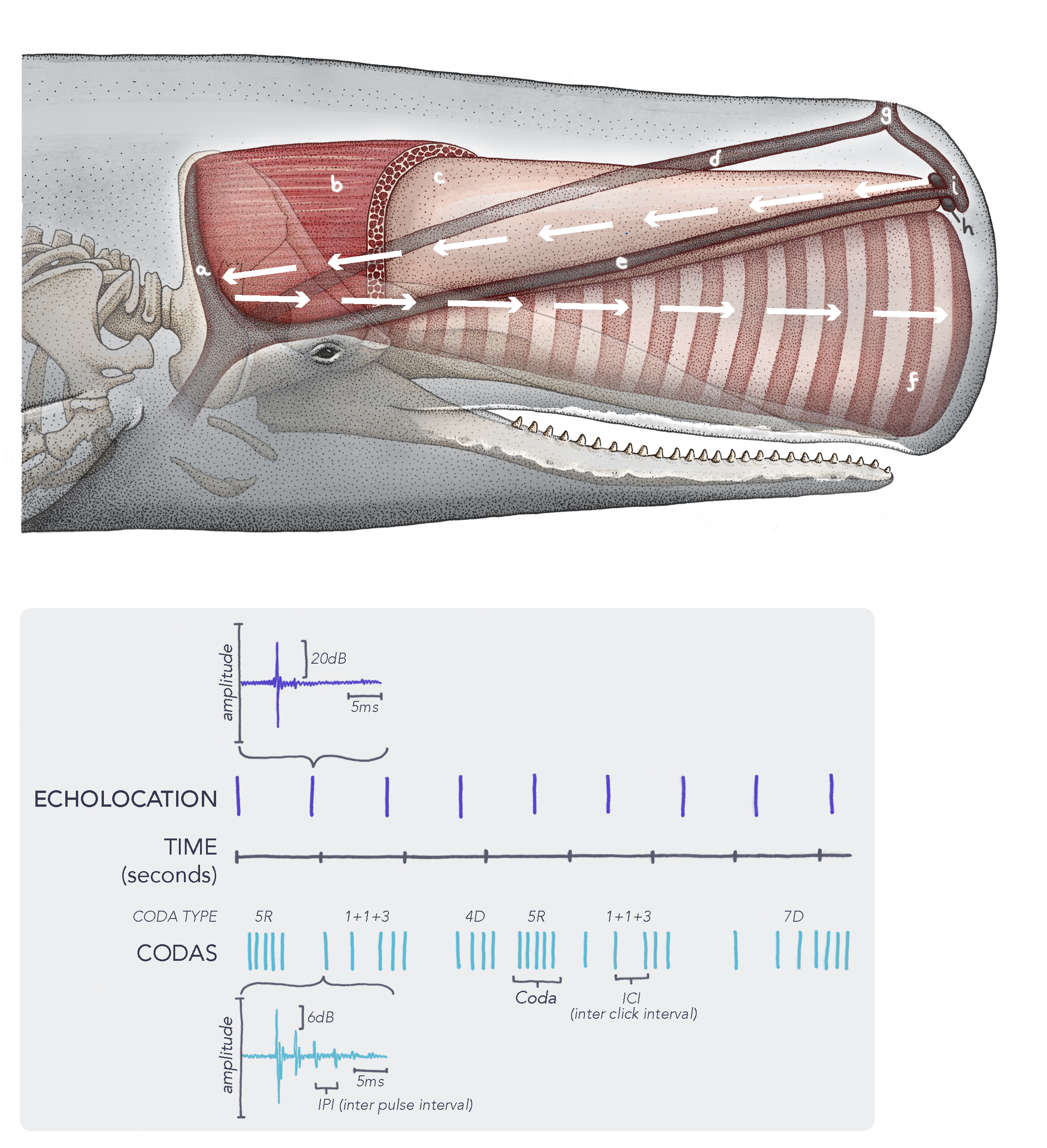Cetaceans have long been famous for their communication abilities. From the impressive clicks and whistles of dolphins to the magical sound of humpback whale song. Sperm whales (Physeter macrocephalus) have been known to communicate too, and new research has made a big leap forward in understanding the structure of their vocalizations.
Sperm whales are highly social, living in pods of around 15-20 animals. They communicate with one another through a series of clicks called codas. While it was previously known that some of these clicks told other whales which whale was “talking” and that different clans had different dialects, very little else has been known about their communication.
Now, scientists focussed on understanding variations in the structure of these codas and found that the codas could be combined in different ways, with the musical concepts of rubato and ornamentation, as well as rhythm and tempo. These four classifications were seen to be combined in a multitude of different ways, making many distinguishable codas from the whale vocalizations. This helped them develop what they have dubbed a “sperm whale phonetic alphabet”.
“Investigating a dataset collected across over a decade of nearly 9,000 codas from the sperm whale families of the Eastern Caribbean clan, our results show that these whales have a more complex combinatorial communication system that demonstrates rubato and ornamentation, in which whales make sub-second adjustments to match one another as they converse and add extra clicks to known coda types depending on the context within their conversations,” said Dr Shane Gero, Biology Lead of Project CETI and co-founder of the Dominica Sperm Whale Project, in statement sent to IFLScience.
While we don’t know the function or meaning of these new features, it opens up the possibility that we might start to find structures and features that were once thought to only belong to humans.
Dr Shane Gero
Codas are either generated in a turn-taking communication style or produced nearly simultaneously with many clicks overlapping. The team found that variation in coda length is not random, but modulated by the whales; they could add extra clicks (ornamentation) or smoothly change the duration (rubato). Data from the Dominica Sperm Whale Project suggests that the whale communication system is vastly more complicated than previously thought because of the combinatorial nature of these features and has a much greater information-carrying capacity based on the combinations of these four terms.

Codas are the series of clicks generated by whales that can be classified into recognizable patterns.
Image Credit: © Alex Boersma Project CETI
“This study defines previously unknown structures in their coda exchanges. It greatly expands the potential ‘encoding space’ or ‘expressivity’ within their coda exchanges. While we don’t know the function or meaning of these new features, it opens up the possibility that we might start to find structures and features that were once thought to only belong to humans,” Gero told IFLScience.
The dataset is largely focused on data from around 60 whales in the Eastern Caribbean clan, so the team does not know yet if the vocalization structure observed here is repeated across other clans of sperm whales.
“We have not yet looked for these features in other clan’s coda exchanges. However, what we have documented here appear to be structures that are likely to be a part of the communication system for all sperm whales,” Gero said. “It may be that one clan makes more dramatic rubato, or perhaps only rarely uses ornaments compared to other clans; but we don’t yet know.”
While understanding the structure of the vocalizations is a big step, the team is already planning a follow-up study to link features of the coda communication to a behavioral context.
“Understanding structure is the first step, the next would be to combine this with an understanding of context, both behavior (what they are doing when we find ornaments, for example) and social context (who they are with when rubato varies the most? Is it with mom-calf, or two sisters, or correlated with kin relatedness, for example),” Gero told IFLScience.
We suggest that this combinatorial system in sperm whales opens up the possibility that sperm whale communication might provide our first example of duality of patterning in another species outside of humans.
Dr Shane Gero
While the team has yet to be able to assign meaning to the codas, they do suggest that the seemingly meaningless sounds in each coda combined in different ways to create lots of options is a similar pattern to human speech, the presence of a combinatorial coding system for the sperm whale sounds could be a starting point for the duality of patterning not seen outside of human language before.
“We do suggest that this combinatorial system we document in sperm whales opens up the possibility that sperm whale communication might provide our first example of duality of patterning in another species outside of humans. The phenomenon that small meaningless parts can be combined into meaningful wholes, which could then be combined into meaningful utterances like sentences,” he said.
This research highlights the previously unknown complex structure of sperm whale vocalizations and how different features of the vocalizations can be combined in terms of rhythm, tempo, rubato, and ornamentation. These features greatly expand the potential information-carrying capacity of these codas, a phenomenon that is extremely rare in nature.
The study is published in Nature Communications.
Source Link: Sperm Whale “Phonetic Alphabet” Surprisingly Similar In Structure To Human Language